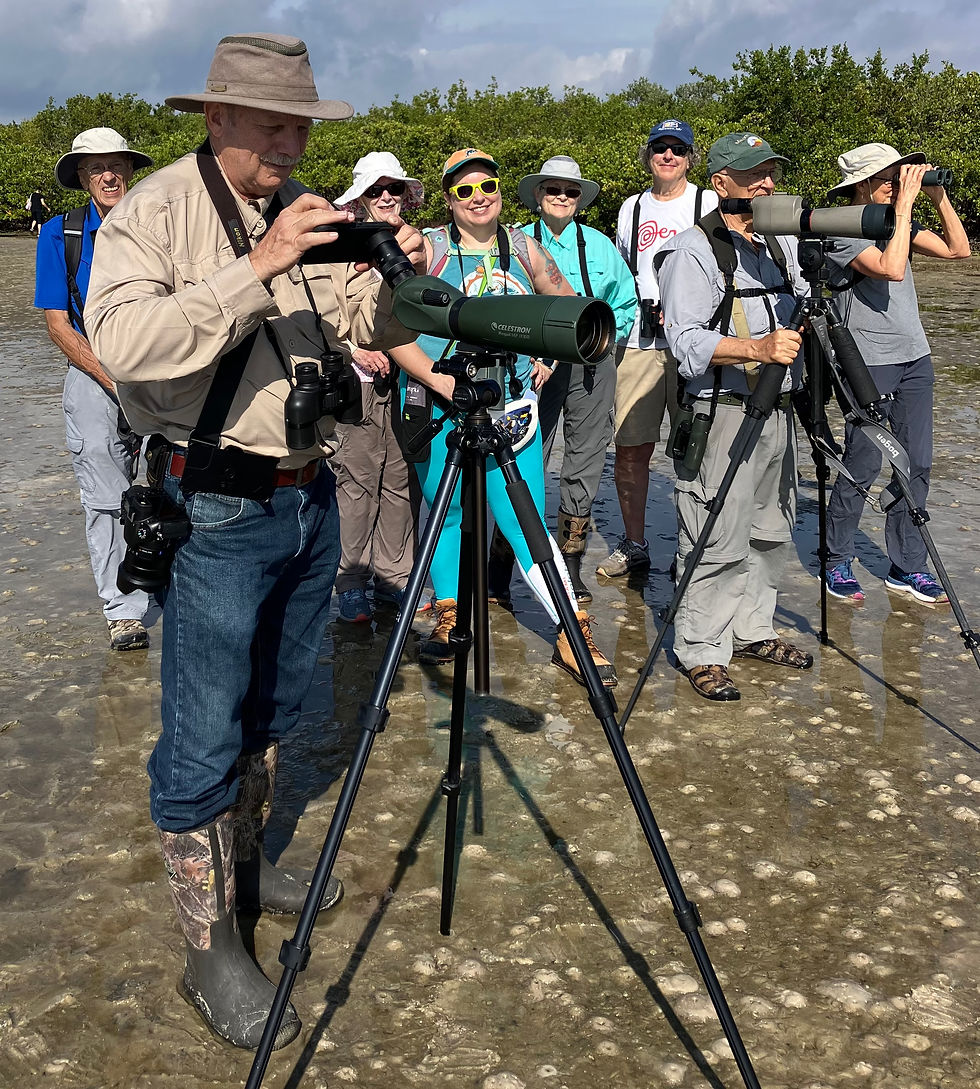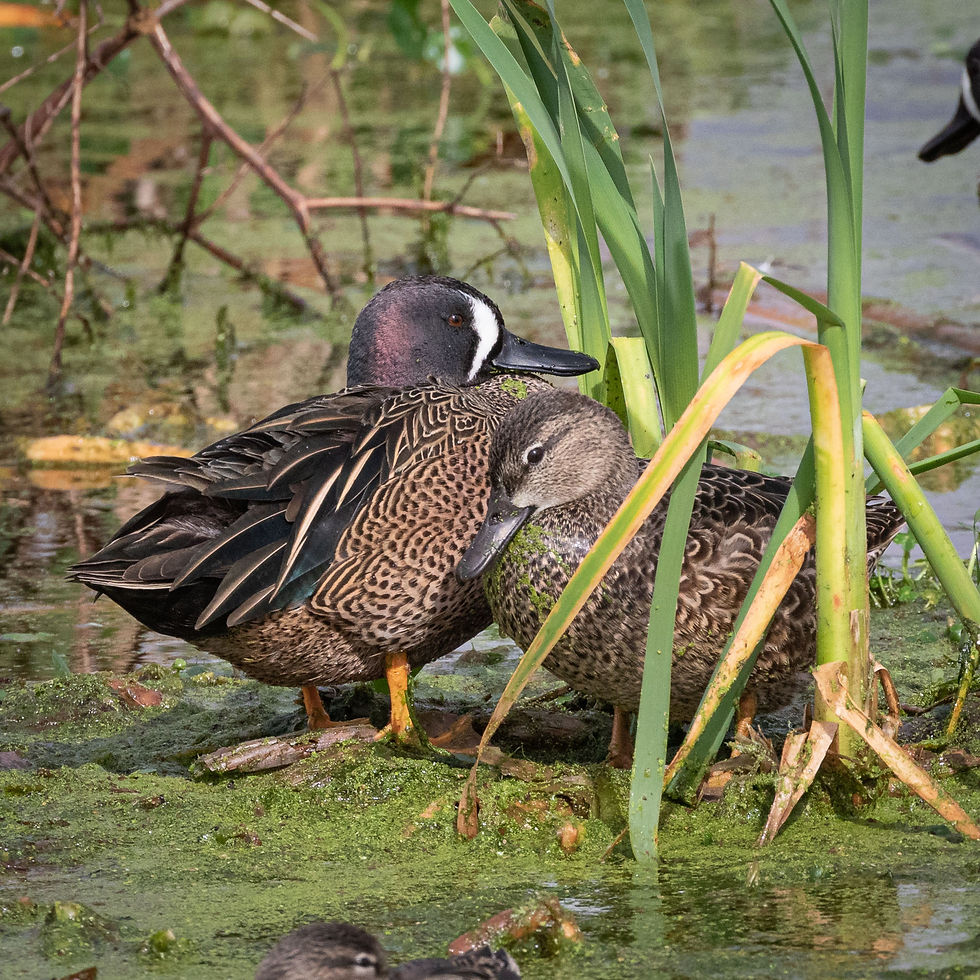Cypress Point Park - Dec. 3
Submitted by Lilian Saul

Nine of us birded Cypress Point Park Dec. 3. The visibility on the water was nonexistent due to the fog, so we left the shore birding to the end. Even with the fog, the group saw 49 species. We got great looks of a Black-and-white Warbler, a Blue-headed Vireo, a Red-shouldered Hawk, and the shore birds on the mud flats at low tide. Unfortunately, the Brown Boobies did not put in an appearance. The list can be seen here.
Bahia Beach – Nov. 25
Submitted by Lynn Mitchell
On the Friday following Thanksgiving, ten participants joined Mic McCarty on a cool morning for a delightful birding walk at Bahia Beach. We identified a Black and White Warbler foraging in an oak tree near the parking lot. As we walked along the wide grassy trail lined with pines, cabbage palms and junipers on both sides, we counted 45 Glossy Ibis feeding in small groups. We saw a good number of Western Sandpipers, 11 Pied-billed Grebes and a single Spotted Sandpiper.
As the group moved on, a spectacular view of wetlands came into view filled with multiples of Tri-colored Herons, Little Blue Herons and Snowy Egrets, all foraging in same general area of the rich wetlands. Additionally, a Wilson’s Snipe attracted our attention as he lifted off and stayed airborne as we all got unusually good looks. Our field trip continued as the morning sun began to warm the air, we heard the familiar chittering of a Belted Kingfisher, and the call of a Sora nearby.
Throughout the morning, we noted small groupings of Blue-winged Teal tallying 16, along with American Wigeons floating on the calm lake waters. This property provides both shelter and thick undergrowth of aquatic vegetation for food. Invertebrates found in shallow flooded wetlands provide another source of food for our wintering ducks.
For the complete checklist, click here.
Facts About Blue-winged Teal

Blue-winged Teal are popular winter migrants and often one of the first duck species to arrive in our area during migration. They are one of the smaller members of the dabbling duck group, yet despite their body size, they are long-distance migrants, with some traveling to South America for the winter.
Their diet is mainly plant material, especially seeds of grasses, sedges and pondweed, which they often glean from the surface as they swim. Snails, insects, and crustaceans round out their diet during the winter season. Nesting pair formation begins in early winter, and here in Florida, we often see them in pairs. It is thought that this behavior continues through spring migration. We are fortunate that Blue-winged teal visit our area in large numbers each winter.
Bahia Beach Preserve in southern Hillsborough County is known for wintering ducks, and this late fall morning did not disappoint. At the close of our field trip, we reported a total of 47 species to eBird.
Read here for more information about Blue-Winged Teal.

Comments